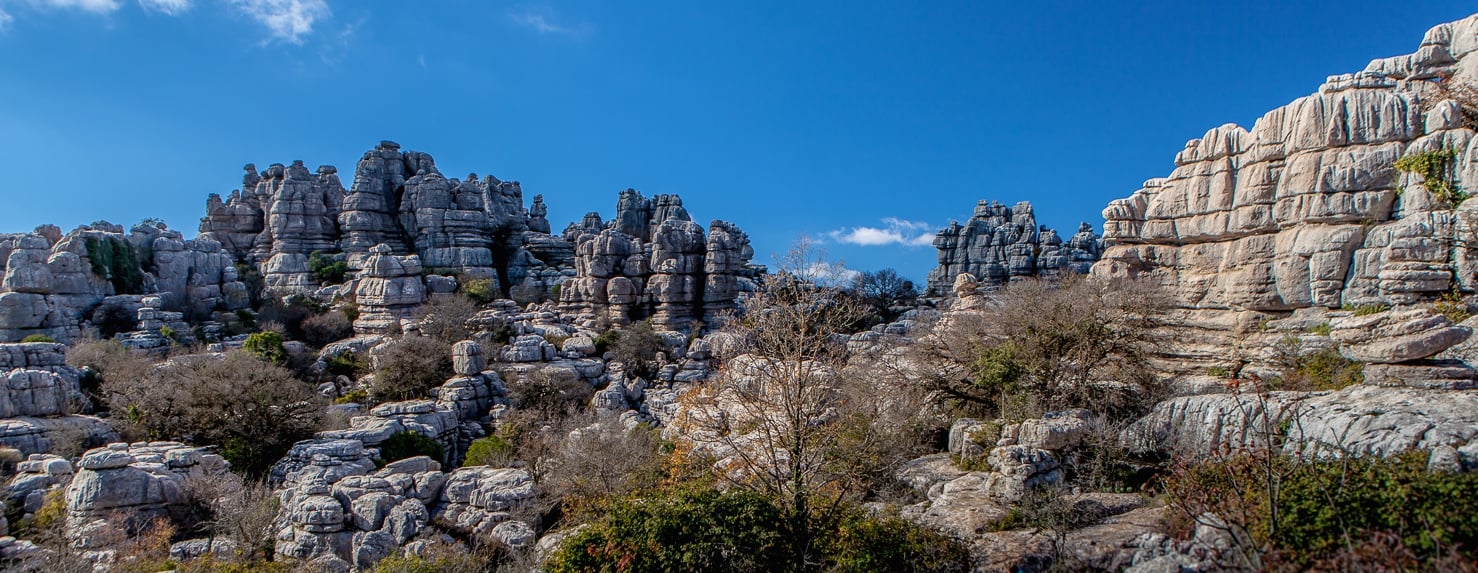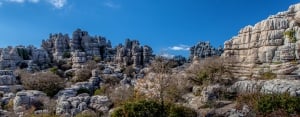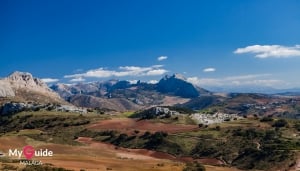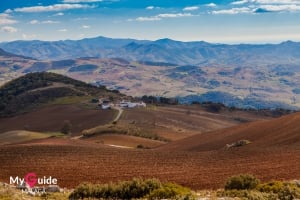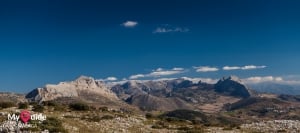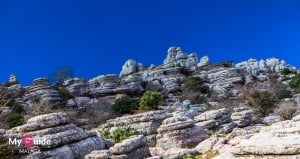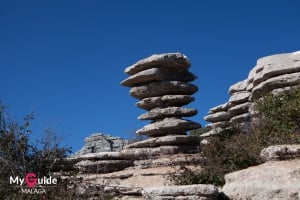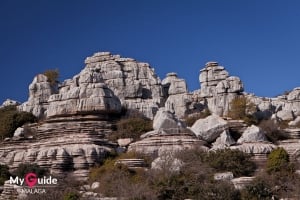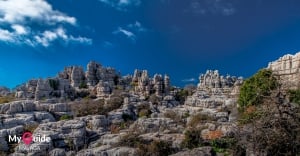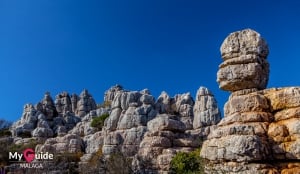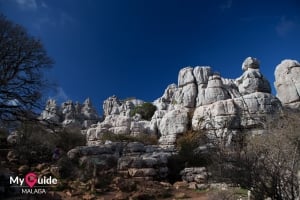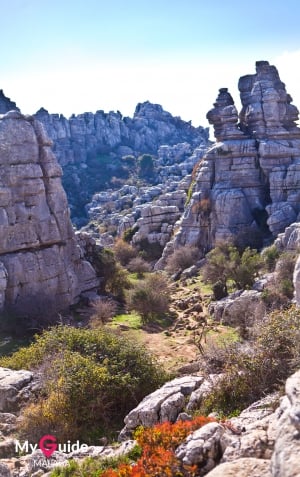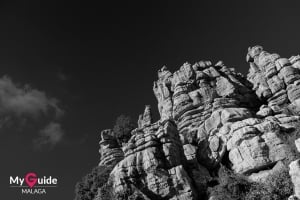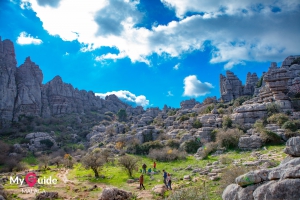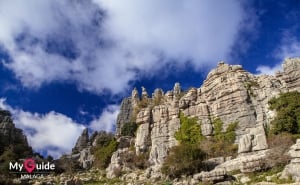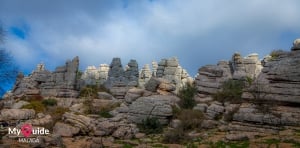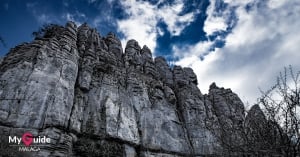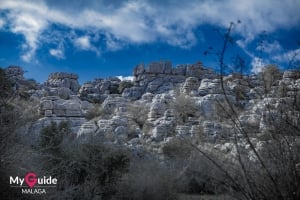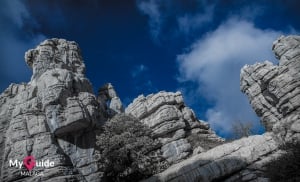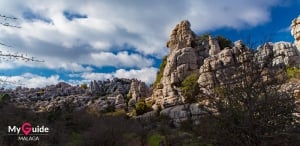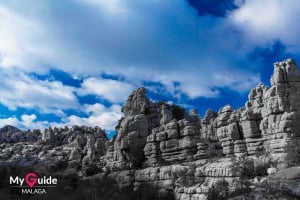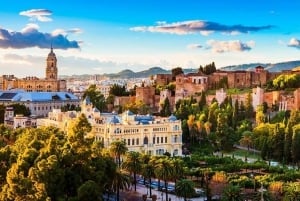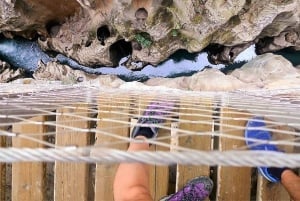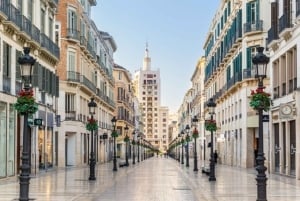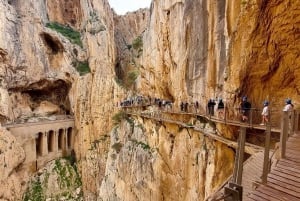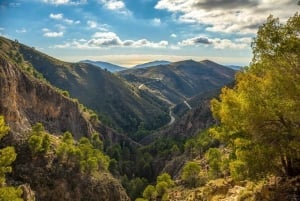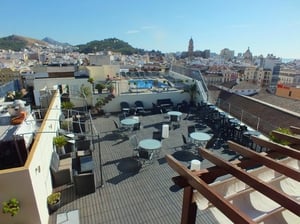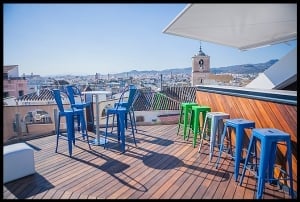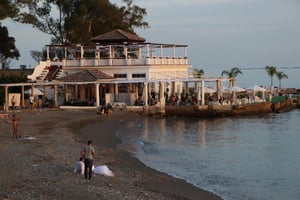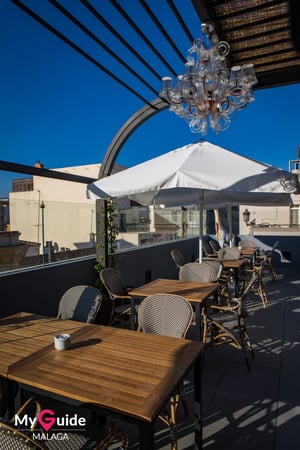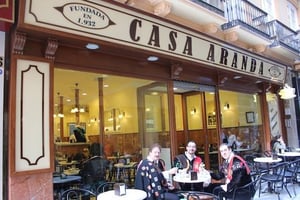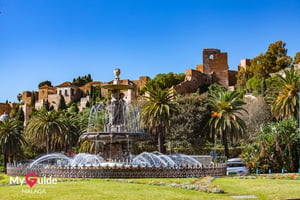The Torcal de Antequera
A unique and spectacular Limestone Kast wonderland
The most spectacular natural geographic feature in Malaga province, if not in Europe, is the Torcal de Antequera. It is a faily easy drive 30 minutes north of the city. Take the A45 motorway in the direction of Granada and Sevilla. At km 42, take the exit for Casaberma. Pass under the carriageway and turn right following signs for Villanueva de la Concepción via the MA 3404 then then turn right onto the A7075. Pass through the village and follow signs to the Centro de Visitantes Torcal Alto. There is car parking but once full, you will be obliged to use the lower car park and wait for a shuttle bus.
We recommend parking in the lower car park and making the trek up the footpath to the visitors centre which has some of the most breathtaking views over the Malaga coast.
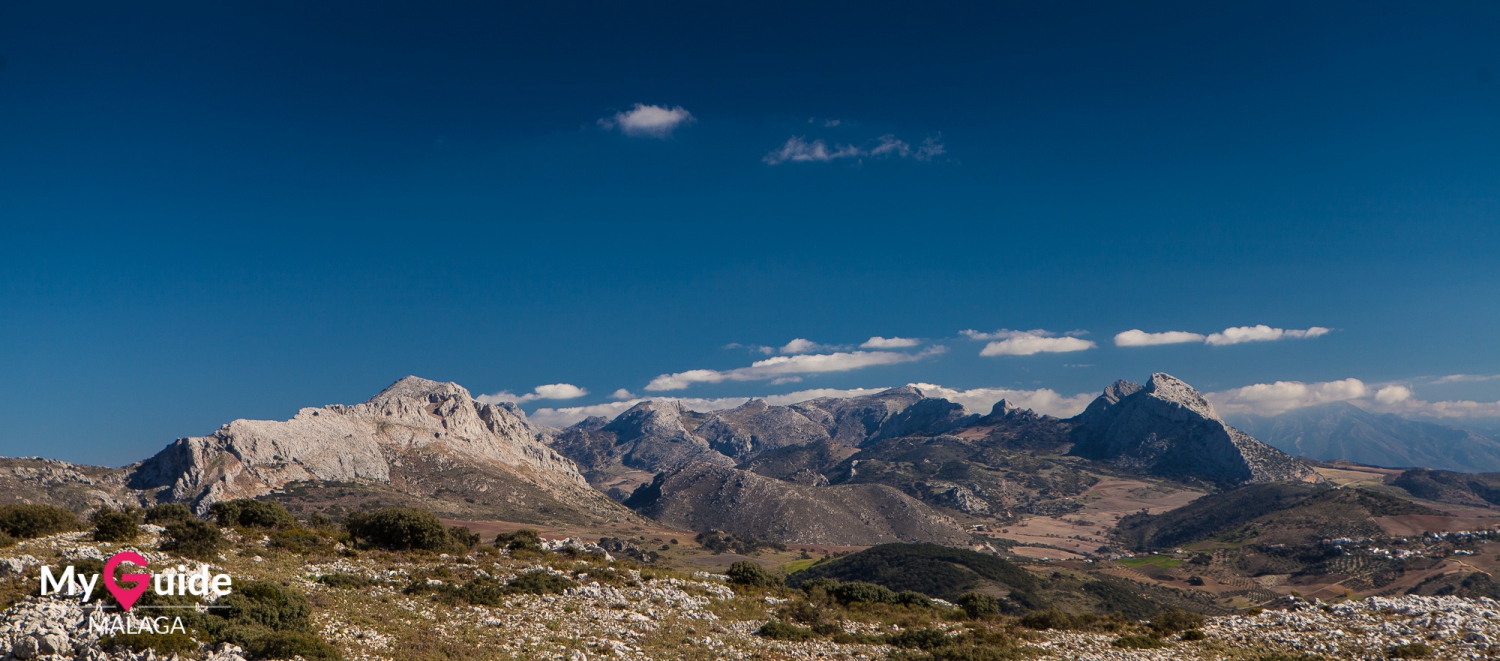
The visitors centre has an interpretation centre and cafe. It is also the starting point for many different guided special tours which take place, both day and night. It is a popular spot for stargazing. Follow the signed routes for the different lengths of walk through what is truly one of the world's most extraordinary landscapes.
The Torcal paths are over the natural rock so it is rugged and demanding terrain. Sturdy shoes are advised and take adequate water. Beware that the extreme high temperatures of summer and the sometimes bitter winter temperatures (it is nearly 1300m above sea level) should be avoided. Check weather reports before you set off and equip yourselves accordingly. It can be heavily shrouded in cloud which is an unpleasant and disorientating experience if you get caught unawares.
Website (Spanish only): www.torcaldeantequera.com contains details of the guided tours.
Visitor centre phone for information: 952 24 33 24
Google Maps location
History of El Torcal
El Torcal's singularity is due to it's Kast landscape, created by a process that has lasted several hundred million years. Going back about 200 million years, when much of Europe and the Middle East were immersed under the sea of Thetis, a process of carbonated sedimentation begins, originated by the accumulation and deposit of skeleton and shells of marine animals at the bottom of the sea that will last about 175 million years. These sediments have been accumulated and compacted at different levels, forming the horizontal strata of thicknesses of thousands of meters.
Towards the Middle Miocene period, as a result of the thrust between the Iberian plates to the north of the Sea of Thetis and the South African, the accumulated sediments are compressed, deformed and fractured until they emerge in a slow and continuous process that still continues. Once this geological formation appears from the sea, the erosive actions of water, ice and wind creates the spectacular karstic landscape of El Torcal de Antequera.
The geological structure of rock itself is another aspect that has favoured the process of dissolving the limestone. A large mushroom fold, with a very wide upper part and horizontal strata, and short, abrupt flanks, limited by major fractures, favors the accumulation of water on the surface and its infiltration. The karst behaves like a great sponge, it stores the rainwater and transmits it to the interior, which favours the dissolution of the subterranean limestone, and the water it finally flows in springs along the whole perimeter of the Torcal.
The presence of the man in the Torcal goes back to prehistory, specifically the Middle Neolithic era, from when archaeological remains have been found in many of the caves that abound in the area. Also, more recent remains of Roman origin have been collected which point towards the use of quarries of the rock, using the limestone in the construction of Rolman villas close to the Torcal: Antiscalia, Osqua and Nescania.
Settlements have existed on the Torcal up until about 100 years ago, and the small round stone huts that remain can still be seen. It was also the hideaway of bandits and rebels over the years, like several other mountainous areas of the province.


